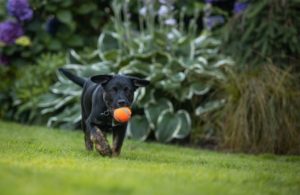
As pet owners, it’s important to keep our furry friends safe from potential harm lurking in our backyards. In the US alone, about 90.5 million households own at least one pet, and since our yards are a part of our homes, it’s important to know about potential dangers such as pests and noxious plants and other hazards that can seriously harm them. There are a surprising number of different types of pests and plants that can be harmful to our beloved pets, so it’s important to take steps to ensure their safety.
Noxious Plants and Weeds
The most common type of danger that pets may encounter in your yard is noxious plants and weeds. These plants contain toxins that can cause illness or even death when ingested by animals. Examples of these plants include the oleander, larkspur, foxglove, yew and monkshood. Your local gardening center can help you identify these plants and provide advice on how to remove them from your yard. Removing oleander, in particular, requires special care, as the toxins can remain in the soil for years after removal. The best way to get rid of it is to cut back the stems and place them in a plastic bag for disposal. Never burn oleander as it gives off toxic fumes that can harm you and your pet.
Garden Pests
Another danger that pets may encounter in the yard are garden pests such as fleas, ticks and mosquitoes. These pesky critters can spread diseases and parasites like heartworm, Lyme disease, and flea and tick-borne illnesses, so it’s important to take steps to keep them out of your yard. Most of these pests that endanger your pet’s health can be eliminated using insecticides and other pest control methods. In case your pet gets bitten by these pests, it is important to consult an expert for the best treatment.
Animal Invaders
Another potential danger that pets may encounter in the yard are animal invaders such as snakes, skunks, raccoons and opossums. These animals can carry various diseases, including rabies. It’s important to keep your yard free of potential hiding spots for these animals such as tall grass or piles of debris. Additionally, you should never attempt to handle wildlife on your own – instead, contact a professional wildlife removal service for assistance.
Lawn Care Products
Many lawn care products contain chemicals that can be harmful to pets when ingested, so it’s important to use pet-safe products whenever possible. Read labels carefully and always follow instructions for application with care. Additionally, keep your pets away from the area while you are applying any lawn care product. Most chemicals will dissipate after a few days, so it’s important to wait at least 24 hours before allowing your pets back in.
Dangerous Mulches
Many types of mulches such as cocoa hulls can be toxic to pets. If you do use mulch in your yard, make sure it is pet-safe and avoid those with a strong odor or made from cocoa hulls. Sometimes they can contain a mycotoxin that can be fatal if ingested. It’s therefore important to check the mulch label before purchasing. Also, keep any mulch away from your pet’s food and water dishes or areas where they sleep or play.
Protecting our pets from potential dangers lurking in our yards is essential for their health and safety. Knowing what kind of pests, plants and other hazards may be present can help us make informed decisions about how to keep them safe.








